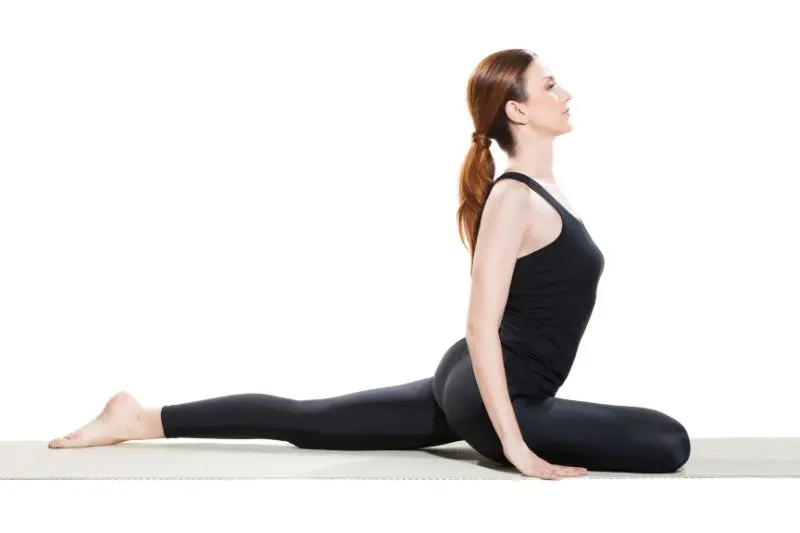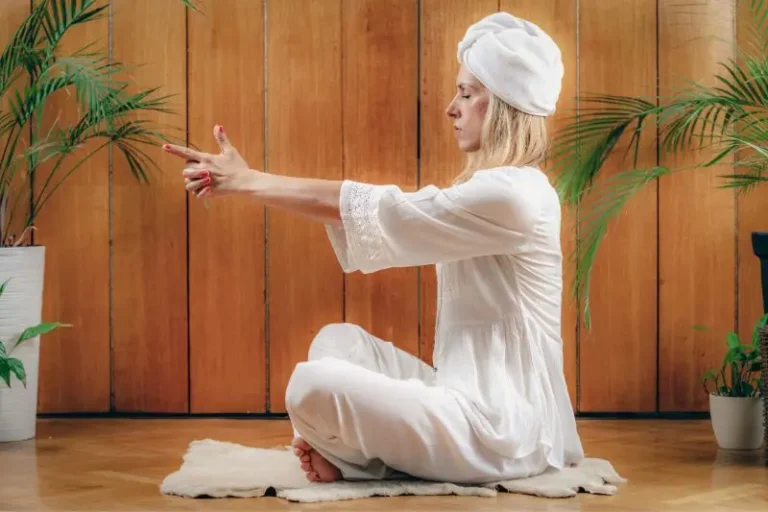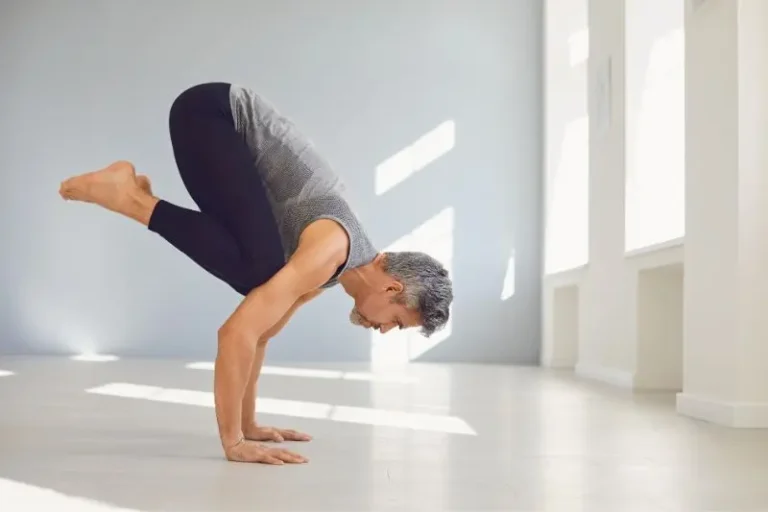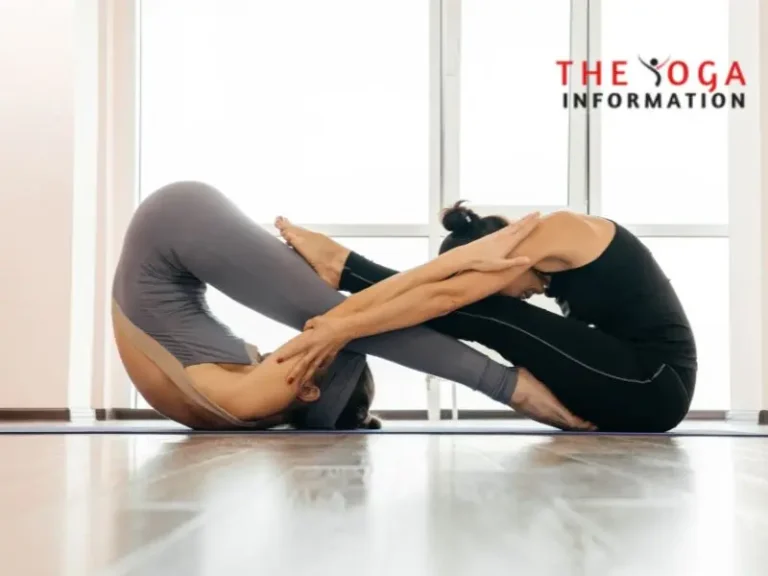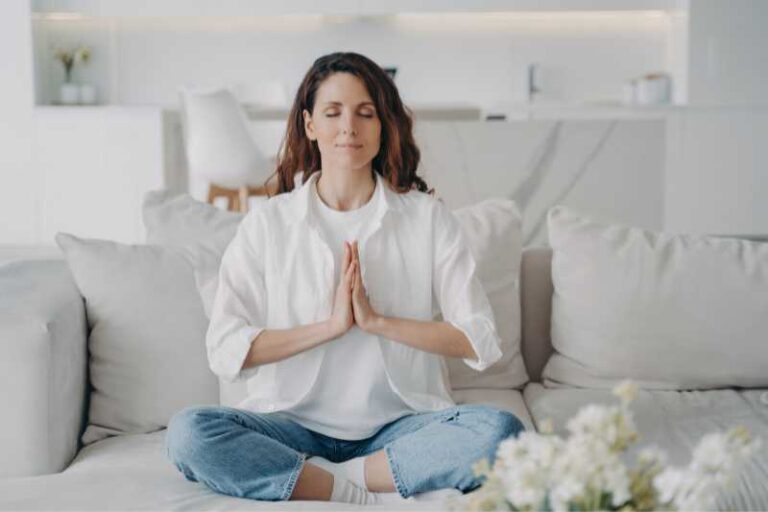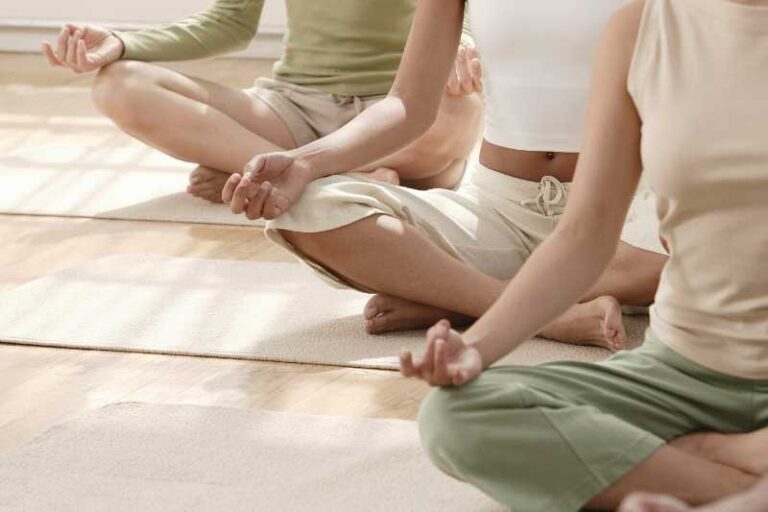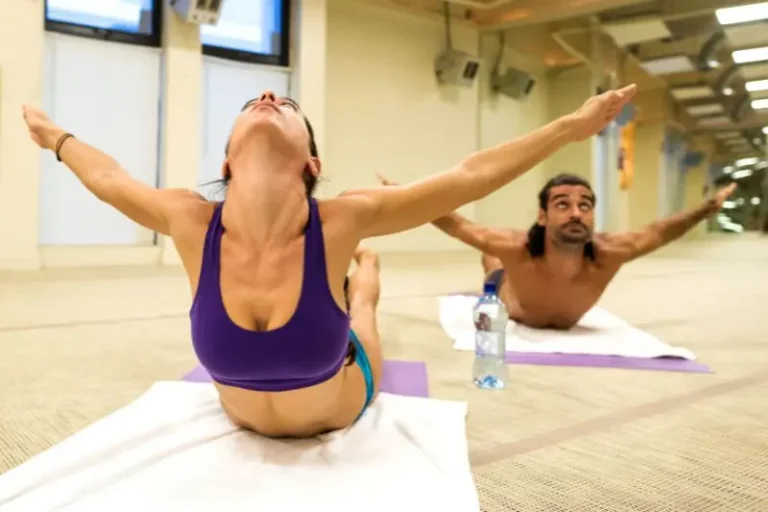The Dragon Pose, also known as “Dragon Lunge” or “Low Dragon,” is a fundamental yoga posture that holds great significance in yoga practice. This pose is a deep hip opener that helps to stretch and strengthen the groin, thighs, and hips. It is often practiced to release tension, improve flexibility, and cultivate patience and inner strength. The Dragon is also believed to stimulate the lower chakras, promoting grounding and stability. Incorporating the Pose into your yoga routine can offer a profound sense of physical and emotional release, making it a valuable addition to any practitioner’s repertoire.
What is Dragon Pose?
The Dragon Pose, also known as “Dragon Flying High” or “Yin Dragon,” is a yoga posture that involves deep hip flexion and extension. It is often practiced as a variation of the Lunge Pose, with a focus on opening up the hips and stretching the muscles in the pelvic region. The pose is typically performed with the back knee on the ground and the front leg in a deep lunge position, allowing for a deep stretch in the hip flexors and quadriceps.
Origins of the Dragon Pose
The Dragon Pose has its roots in traditional yoga practices, particularly in the realm of yin yoga and Chinese martial arts. In yin yoga, the Dragon is considered a yin variation of the traditional Lunge Pose, emphasizing the passive stretching of the hip flexors and the opening of the pelvis. This gentle yet intense posture is designed to target the connective tissues and fascia surrounding the hips, promoting flexibility and mobility in this area of the body.
Practice these to practice Dragon Pose perfectly
If you’re looking to master the Dragon Pose perfectly, incorporating these variations into your practice routine can be incredibly beneficial. Starting with the Baby Dragon Pose, you can gradually progress to more advanced variations such as the Dragon Flying High Pose, Dragon Flying Low Pose, and Twisted . For an added challenge, explore poses like the Winged Dragon , Overstepping Dragon Pose, Forward Fold Dragon Splits Pose, and Fire Breathing. By consistently practicing these variations, you can enhance your flexibility, strength, and overall proficiency in the Dragon Pose, bringing you closer to perfecting this empowering yoga posture.
Dragon Pose
The Dragon Pose, also known as Dragon , is a deep hip opener that targets the hip flexors, hamstrings, and quadriceps. It also provides a gentle stretch for the chest and shoulders. To perform the Dragon Pose
- Start in a tabletop position with your hands directly under your shoulders and your knees under your hips.
- Step your right foot forward between your hands, bringing your right knee directly over the ankle.
- Lower your left knee to the mat and untuck your toes.
- Slowly begin to sink your hips toward the mat, feeling a deep stretch in the front of the left hip and thigh.
- Keep your chest lifted and your spine long as
you breathe deeply into the pose. - Hold for 30 seconds to one minute, then switch to the other side.
Baby Dragon Pose
The Baby Dragon Pose is a modified version of the Pose that is accessible to beginners and those with limited flexibility.
- Start in a tabletop position.
- Step your right foot forward between your hands, as in the Dragon Pose.
- Lower your left knee to the mat and untuck your toes.
- Place your hands on the mat or on blocks for support.
- Gently sink your hips toward the mat, finding a comfortable stretch in the front of the left hip and thigh.
- Hold for 30 seconds to one minute, then switch to the other side.
Dragon Flying High Pose
- The Dragon Flying High Pose is an advanced variation of the Pose that requires greater strength and flexibility. To perform the Dragon Flying High Pose
- The Dragon Flying High Pose is an advanced variation of the Pose that requires greater strength and flexibility. To perform the Dragon Flying High Pose
- Start in the Pose with your right foot forward and your left knee lowered to the mat.
- Engage your core and lift your hands off the mat, bringing your torso upright.
- Keep your chest lifted and your shoulders relaxed as you feel a deep stretch in the front of the left hip and thigh.
- Hold for 30 seconds to one minute, then switch to the other side.
Dragon Flying Low Pose
The Dragon Flying Low Pose is a challenging variation of the Dragon Pose that requires strong stabilization and control. To perform the Dragon Flying Low Pose
- Start in the Pose with your right foot forward and your left knee lowered to the mat.
- Place your hands on the mat for support and begin to walk them forward, lowering your chest toward the mat.
- Keep your hips sinking toward the mat as you find a deep stretch in the front of the left hip and thigh.
- Hold for 30 seconds to one minute, then switch to the other side.
Twisted Dragon Pose
The Twisted Dragon Pose adds a spinal twist to the traditional , providing an additional element of challenge and release. To perform the Twisted Pose
- Start in the Dragon Pose with your right foot forward and your left knee lowered to the mat.
- Place your right hand on the mat and reach your left arm toward the ceiling.
- Gently twist your torso to the right, keeping your chest lifted and your hips sinking toward the mat.
- Hold for 30 seconds to one minute, then switch to the other side.
Winged Dragon Pose
The Winged Dragon Pose incorporates an arm variation to open the chest and shoulders while deepening the hip stretch. To perform the Winged Dragon Pose
- Start in the Pose with your right foot forward and your left knee lowered to the mat.
- Reach your arms out to the sides at shoulder height, with your palms facing down.
- Keep your chest lifted and your shoulders relaxed as you feel a deep stretch in the front of the left hip and thigh.
- Hold for 30 seconds to one minute, then switch to the other side.
Overstepping Dragon Pose
The Overstepping Dragon Pose challenges balance and stability by extending the range of motion in the hips and legs. To perform the Overstepping.
- Start in the with your right foot forward and your left knee lowered to the mat.
- Begin to walk your right foot out to the right, extending the distance between your feet.
- Keep your hips sinking toward the mat as you find a deep stretch in the front of the left hip and thigh.
- Hold for 30 seconds to one minute, then switch to the other side.
Health Benefits of Dragon Pose
Exploring the Incredible Health Benefits of Dragon Pose Are you searching for a yoga pose that can invigorate both your body and mind? This dynamic posture, also known as “Dragon’s Breath,” offers a multitude of health benefits that can enhance your overall well-being.
Enhances Hip Flexibility: Dragon Pose is renowned for its ability to deeply stretch the hip flexors. By assuming this pose, you can increase flexibility in the hips, groin, and thighs, which can be especially beneficial for individuals who spend extended periods sitting or experience tightness in these areas.
Releases Tension in the Lower Back: The gentle yet profound stretching involved in Pose can effectively alleviate tension and discomfort in the lower back. Regular practice of this pose may contribute to improved spinal health and reduced lower back pain.
Stimulates the Meridian Lines: In traditional Chinese medicine, Dragon Pose is believed to stimulate the meridian lines associated with the liver and gallbladder. By activating these energy pathways, practitioners may experience enhanced organ function and an overall sense of vitality.
Cultivates Emotional Release: Emotions and tension can become stored in the hips and pelvis, impacting our mental and emotional well-being. Provides an opportunity to release these stored emotions, promoting a sense of emotional balance and inner peace.
Strengthens the Mind-Body Connection: Engaging in the deep, mindful breathing and intense hip opening of encourages a profound connection between the body and mind. This can lead to increased self-awareness and a heightened sense of mindfulness both on and off the mat.
Encourages Patience and Persistence: As a challenging posture that requires time and dedication to master, Dragon Pose teaches practitioners the value of patience and persistence. Embracing the gradual progress in this pose can foster a sense of determination and resilience in one’s yoga practice and daily life.
Improves Digestive Function: The deep compression and extension involved in Dragon Pose can stimulate the abdominal organs, potentially aiding digestion and promoting a healthy metabolism.
Enhances Circulation: By stretching and engaging the lower body, Dragon Pose can improve blood circulation in the hips and legs, helping to alleviate stagnation and promote overall cardiovascular health.
Disadvantages of the Dragon Pose
While the Dragon Pose offers numerous benefits, it’s important to be aware of the potential disadvantages associated with this pose:
Risk of Overstretching: Due to the intense nature of the Dragon Pose, there is a risk of overstretching the muscles and connective tissues in the hips and thighs, leading to strain or injury if not performed mindfully.
Knee and Lower Back Strain: Improper alignment or excessive force in the Dragon Pose can put strain on the knees and lower back, potentially leading to discomfort or injury if the pose is not executed with care.
Conclusion
The Dragon Pose is a powerful yoga posture that offers a wide range of physical and mental health benefits. By practicing the Dragon Pose, individuals can experience increased flexibility, strength, and balance while also relieving tension in the hips and groin. Additionally, this pose can help to improve posture, stimulate the abdominal organs, and enhance overall circulation. Its grounding and energizing effects make it a valuable addition to any yoga practice. Whether you’re a beginner or an experienced yogi, incorporating the into your routine can contribute to a greater sense of well-being and vitality.
